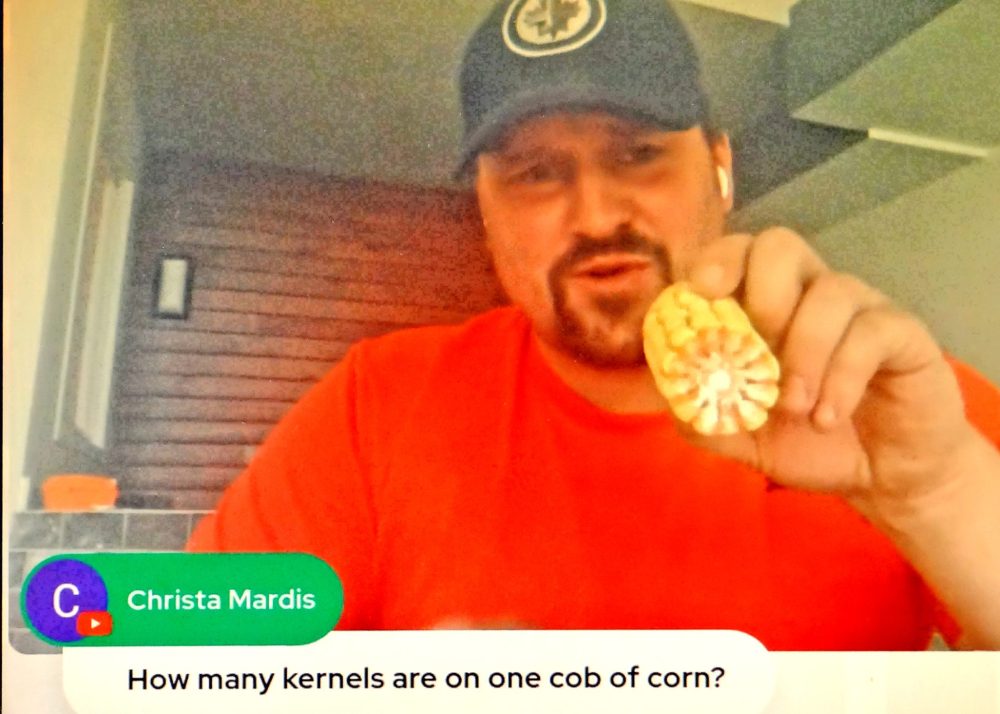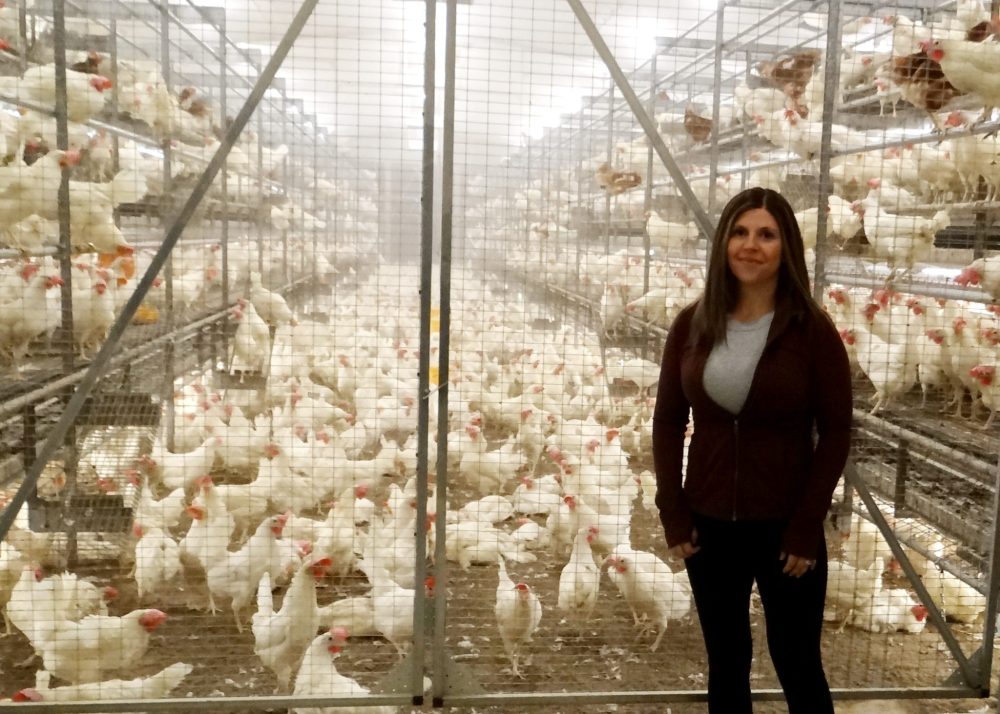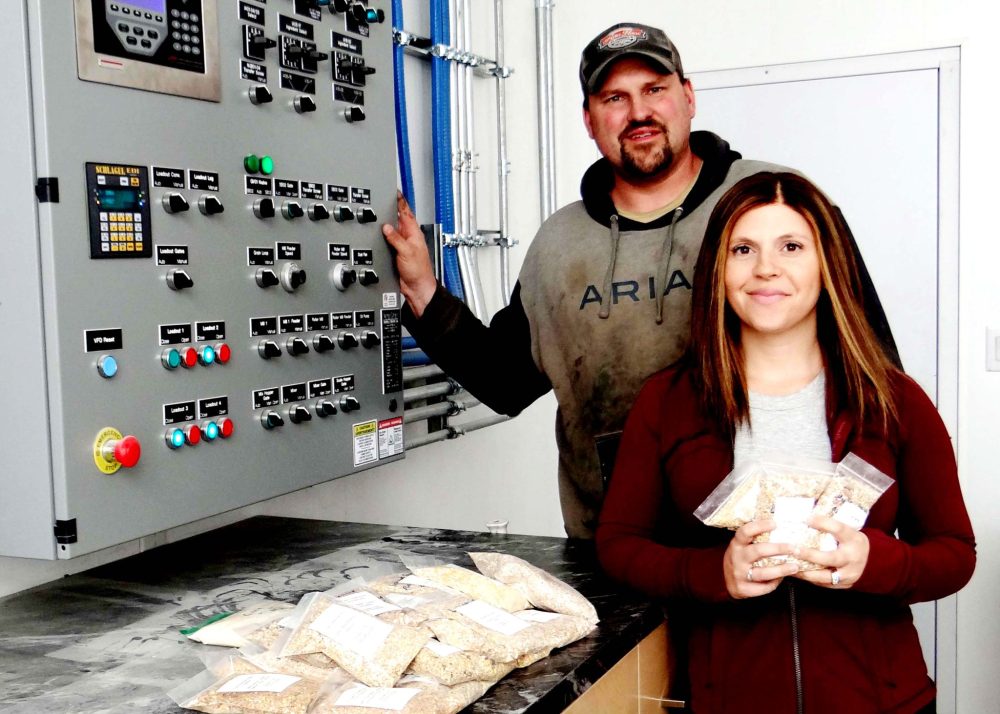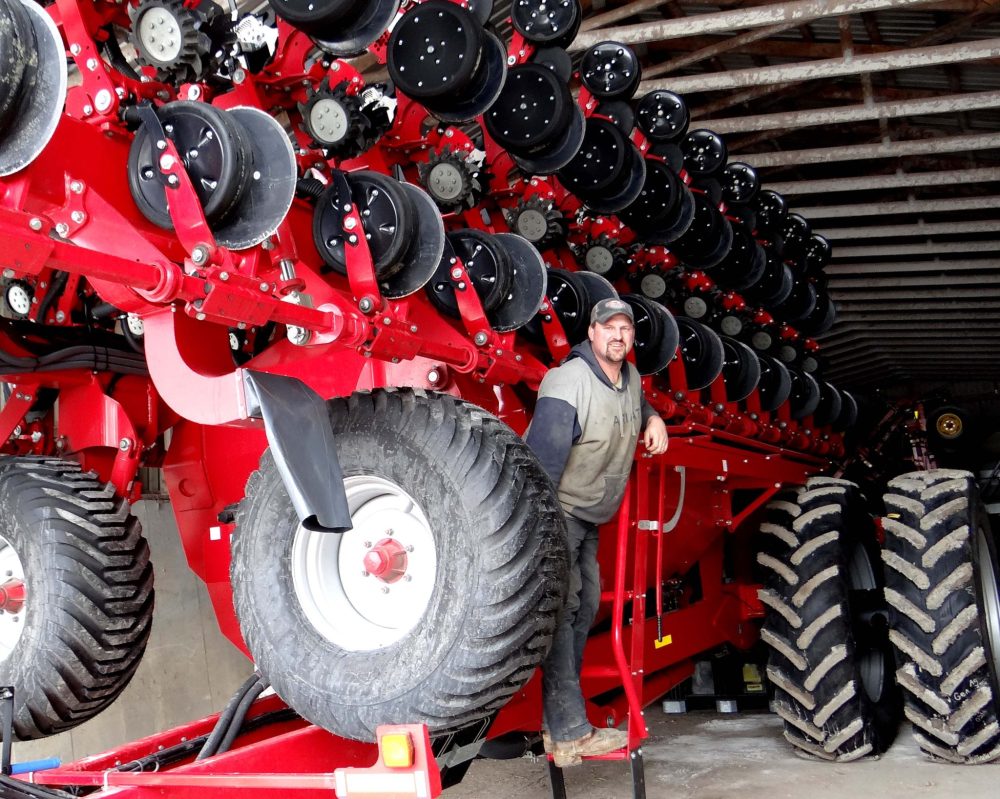Oswalds are happy to be doing ‘most important job on earth’
Advertisement
When Brent Oswald is asked why he believes farming is the most important job on earth, the third generation owner of Cottonwood Farms in the Friedensfeld area has a ready answer.
“Everybody’s gotta eat.”
And the Oswald family has been putting food on Manitoba tables for nearly 100 years. Their farm on Ekron/Oswald Road, southeast of Steinbach, will be a Centennial Farm in another five years.

Brent Oswald, featured in Agriculture in the Classroom’s Follow the Farmer series in January, gave hundreds of Manitoba school children a video tour of his Friedensfeld farm and threw in a lesson on growing corn.
The field is like a giant solar panel harvesting the energy the plants need to grow, he explained.
Normally, if it is a nice spring, plants will push through in five to seven days after planting, but the seeds could sit there three weeks before popping up, if it isn’t warm enough.
If seeded too soon, the seeds will just lay there until the soil warms up and then sprout and begin growing.
Brent told the students he remembers one year when he wanted to show his father how good he was at planting corn. Early in the spring, he planted corn all night and at 6 a.m. it started snowing.
He thought it would be wrecked and they would have to reseed, but they didn’t, and when the snow melted the plants grew and flourished, resulting in one of the best crops ever.
The students wanted to know the difference between the corn Oswald planted and what was grown in the garden, or purchased at the grocery store.
“Field corn grows to 12-14 feet high, while sweet corn is only seven to eight feet tall. The corn on our farm is used primarily for feeding livestock. Feed corn would be nutritious for you, but wouldn’t taste so good. For feed corn, we want starch and not as much sugar.”
Because corn is a very big plant with very heavy cobs, strong stems and deep roots are needed. The roots feed the cob, bringing up nutrients from the soil. The height of the plant determines the depth of the roots.
“With corn being 10-12 feet high it is hard to believe it is a member of the grass family. Just like your lawn.”

When corn ripens, the whole plant will start changing colour, turning brown, kind of like wheat, which is golden yellow when ripe and ready to harvest. The last to dry down in corn are the cobs, as the plant sucks the moisture of the cob and the silks will fall off.
“That’s an indication that it is time to put gas in the combine.”
The combine just picks up the cobs and the header pulls the cobs off the plant to be fed into the combine, which shakes the kernels off the cobs, using amazing technology. The kernels drop onto a grain pan and anything that isn’t grain blows out the back.
A grain cart, driven alongside the combine, is used for harvesting because it has larger tires than a truck and doesn’t compact the soil the way a truck would. When the grain cart is filled, it leaves the field to load a semi-trailer, which takes the grain back home to be dried.
“We combine about 12 acres per hour and keep two semis operating constantly. The bottleneck is at the dryer, which cannot keep up with the combine. Next year, we are going to spend $2 million to install a bigger dryer and will be able to double the daily harvest to 80 acres a day.”
Once the corn is dried it can be stored until decisions are made on how it will be used.
Cottonwood Farms grows about 1,200 acres of corn and have another 1,800 acres of crop land in canola and wheat. The Oswalds grow their own feed for a 24,000 broiler operation and 6,000 laying hens. Brent says they also do custom work for neighbors who do not have the large equipment.
Before corn can be fed to livestock and poultry, it needs further processing at the Oswald feed mill.
Oswald says he had been making feed for neighboring farms for quite a few years and for their own dairy and broiler operations, as well. They now produce feed for 19 farms, mostly dairy, but including a sheep farm and a few beef guys.

Three years ago, they sat down and reviewed their farm operation, which at that time included grain, processing feed, dairy and broilers, Brent said.
Lining up the four entities, he found dairy was the most work and the least profit. They decided to go in another direction and gave up the cows. The quota was sold and a new floor was poured in the dairy barn, with a view of putting broilers in it. But because of the price of quota, that idea is on hold for now and the building is serving as a shop, providing shelter for a new 24-row corn planter.
A couple of major building projects have kept the Oswalds very busy over the past year with the expansion of their feed mill and the unexpected addition of 6,000 laying hens to their farm operation.
Brent’s mother, Gwen, won the new producer layer quota lottery in November of 2023 and needed to have a barn ready for hens by October of 2024. At 77, she still goes to the barn every day to pick up eggs for baking. She says she is afraid to quit, for fear of getting old.
Gwen Oswald had her name in for the new producers’ layer quota lottery every year for three decades, but never expected to win it. Ironically, she almost missed the deadline, thinking she would not enter again, but at the last minute changed her mind and they dropped off the application 10 minutes before deadline.
The quota is for 6,000 birds and the Oswalds built a barn with a capacity of 11,860, for future expansion of the flock.
Brent said he expected to not be as busy once the cows were gone, but he is just as busy as ever. But it is a different kind of busy, he says, and he now enjoys the luxury of more kids hockey games, more winter vacations, and an opportunity, maybe, to go to Florida at the end of the month to join his daughter, who will be in a cheerleading competition at Disney World.
“The flight is booked and I will be going, unless we are putting the crop in the ground at that time.”
Following a family tradition of always being the first out with the seeder, Brent says he follows the lunar calendar when deciding when to plant. The temperature is the coldest at a full moon and then warms up. The full moon in April was on the 12th, so it would be possible Oswald could be planting corn by the end of the month.

Marc Hutlet, who has been providing the Oswalds with corn seed since 1980, jokingly refers to Brent’s observation of the lunar cycle and its effect on the weather as the Cottonwood Voo-Doo Moon Forecast.
But there must be something to the Oswalds’ forecasting system, for the family has been growing an ever-increasing acreage of grain corn successfully for more than four decades, and Brent’s father, Edwood Oswald, was always the first to get his crop in.
Brent’s father started it all, planting 12 acres of corn for silage in 1980, as one of Marc Hutlet’s original customers, when Hutlet was still selling for Cargill.
In 1981, the Oswalds started growing limited acres of grain corn, instead of silage corn, and continued to increase the acres in grain corn, depending on the capacity of their dryer.
And now, with 1,200 acres of grain corn, dryer capacity is soon to be a problem of the past. Oswald’s new $2 million dollar dryer will have no trouble keeping up with the combine at harvest time.
And seeding will go a lot quicker this year as well. In 1998, the Oswalds went from a four-row to an eight-row planter, and as the acreage continued to increase, went to a 12-row planter. This year, Brent replaced the 12-row planter with a 24-row planter.
